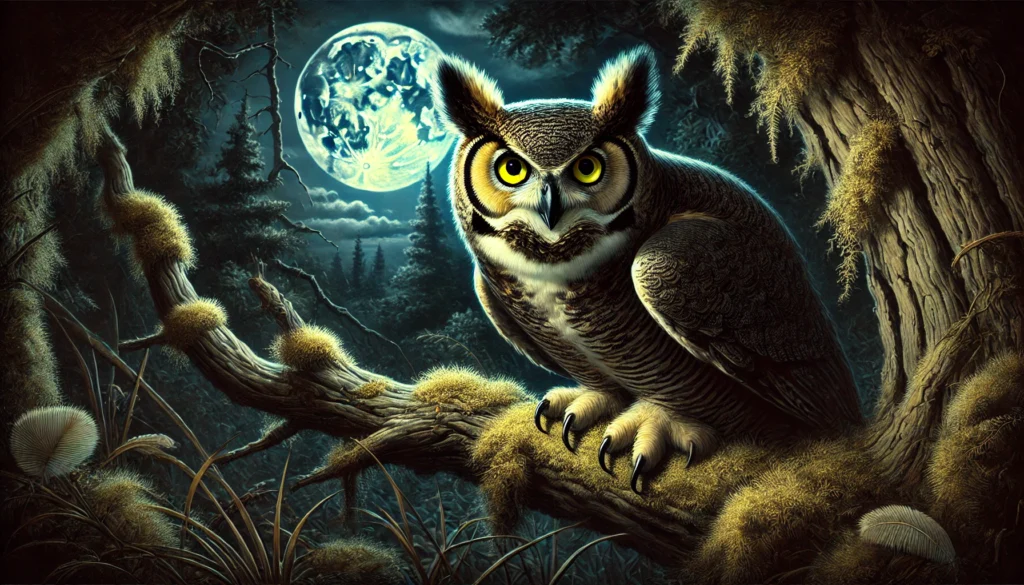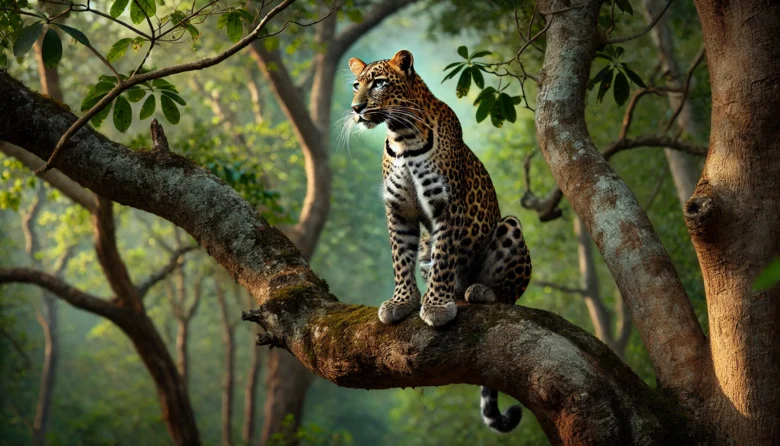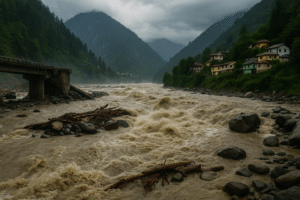When we think about the animal kingdom, predators often stand out as the powerful and majestic rulers of their domains. However, their importance goes far beyond their awe-inspiring presence. The role of predators in ecosystem balance is crucial, ensuring the health and stability of our natural world. In India, where diverse ecosystems range from dense forests to vast grasslands, understanding the role of predators is vital for wildlife conservation and ecosystem management.
Why Predators Matter
Predators play several essential roles in maintaining the balance of ecosystems:
Population Control: Predators help regulate the populations of prey species. Without predators, prey populations can explode, leading to overgrazing and depletion of vegetation. This imbalance can cause habitat degradation and loss of biodiversity.
Maintaining Biodiversity: By controlling the populations of dominant species, predators ensure that no single species monopolizes resources. This promotes a diverse range of plant and animal life, contributing to a healthy and resilient ecosystem.
Healthy Prey Populations: Predators often target the sick, weak, or old individuals in prey populations. This natural selection process ensures that the strongest and healthiest individuals survive and reproduce, maintaining the genetic health of prey species.
Nutrient Cycling: Predators contribute to nutrient cycling by breaking down carcasses and returning nutrients to the soil. This process supports plant growth and overall ecosystem productivity.
Behavioral Influence: The presence of predators can alter the behavior of prey species, often referred to as the “ecology of fear.” For example, herbivores might avoid certain areas to reduce the risk of predation, allowing vegetation in those areas to thrive.

Iconic Predators of India
India is home to a rich variety of predator species, each playing a unique role in their respective ecosystems. Here are some iconic predators that contribute to ecosystem balance in India:
Bengal Tiger (Panthera tigris tigris): As the apex predator of Indian forests, the Bengal tiger controls populations of large herbivores like deer and wild boar. This regulation helps maintain forest health and biodiversity.
Indian Leopard (Panthera pardus fusca): Leopards are versatile predators found in diverse habitats. They help control populations of smaller herbivores and maintain the balance in both forested and urban areas.
Snow Leopard (Panthera uncia): In the high-altitude regions of the Himalayas, snow leopards regulate populations of mountain ungulates like blue sheep and ibex, ensuring the health of fragile alpine ecosystems.
Indian Wolf (Canis lupus pallipes): Indian wolves play a vital role in grassland and scrubland ecosystems. By preying on species like chinkara and blackbuck, they prevent overgrazing and support plant diversity.
Marsh Crocodile (Crocodylus palustris): Found in rivers and wetlands, marsh crocodiles control populations of fish and other aquatic animals, contributing to the health of freshwater ecosystems.
Great Horned Owl (Bubo virginianus): This nocturnal predator helps regulate populations of rodents and small mammals, preventing crop damage and supporting agricultural health.
The Impact of Losing Predators
The loss of predators can have far-reaching consequences for ecosystems:
Trophic Cascades: The absence of predators can lead to trophic cascades, where changes in one level of the food chain cause ripple effects throughout the ecosystem. For example, without tigers, deer populations can explode, leading to overgrazing and forest degradation.
Biodiversity Loss: Predators maintain biodiversity by keeping prey populations in check. Their absence can result in the dominance of certain species, reducing overall biodiversity and ecosystem resilience.
Habitat Degradation: Overpopulation of herbivores due to predator loss can lead to habitat degradation. This affects not only the plant community but also other wildlife that depend on that habitat.
Human-Wildlife Conflict: When natural prey populations decline, predators may turn to livestock or even human settlements for food, increasing conflicts and posing risks to both humans and wildlife.
Conservation Efforts and Challenges
Conserving predators is essential for maintaining ecosystem balance, but it comes with challenges:
Habitat Loss: Urbanization, agriculture, and deforestation are major threats to predator habitats. Protecting and restoring natural habitats is crucial for their survival.
Poaching and Illegal Trade: Poaching for fur, bones, and other body parts is a significant threat to predators like tigers and leopards. Strengthening anti-poaching measures and enforcing wildlife protection laws are essential.
Human-Wildlife Conflict: Mitigating conflict between predators and humans requires innovative solutions, such as creating buffer zones, promoting community-based conservation, and compensating farmers for livestock losses.
Climate Change: Climate change affects predator habitats and prey availability. Conservation strategies must consider climate impacts and focus on building ecosystem resilience.
Successful Conservation Stories in India
India has seen some remarkable successes in predator conservation:
Project Tiger: Launched in 1973, Project Tiger has been instrumental in increasing tiger populations and protecting their habitats. Through strict protection measures and community involvement, the project has helped stabilize tiger numbers in many reserves.
Snow Leopard Project: Initiated to protect the elusive snow leopard, this project focuses on habitat conservation, research, and community engagement. It aims to reduce human-leopard conflicts and promote sustainable livelihoods for local communities.
Waghoba Eco Volunteer Project: This community-based initiative in Maharashtra works to mitigate human-leopard conflicts by promoting coexistence and involving locals in conservation efforts.
Conclusion
The role of predators in ecosystem balance cannot be overstated. They are crucial for maintaining healthy, diverse, and resilient ecosystems. In India, where biodiversity is both a heritage and a resource, conserving predators is essential for the well-being of our natural world. By understanding and appreciating the role of predators, we can contribute to their conservation and ensure a balanced and thriving environment for future generations.
Author’s Note
Thank you for taking the time to explore the role of predators in ecosystem balance. I hope this blog inspires you to support predator conservation efforts in India. Together, we can make a difference in preserving our natural heritage.
G.C., Ecosociosphere contributor.
References and Further Reading
- Project Tiger – National Tiger Conservation Authority
- Snow Leopard Trust – Protecting the Ghost of the Mountains
- Famous Botanical Gardens In India. https://www.telanganaa.in/2023/06/famous-botanical-gardens-in-india_28.html
- Indigenous Bee Conservation in the Amazon UPSC. https://www.iasgyan.in/daily-current-affairs/stingless-bees
- The Harmony of Ecological Communities: Nature’s Intricate Dance ð¿. https://theorionschool.org/dictionary/harmony-ecological-communities-nature-dance





Comments
Hey there! Someone in my Facebook group shared this website with us so
I came to look it over. I’m definitely loving the information. I’m bookmarking and will
be tweeting this to my followers! Fantastic blog and
fantastic style and design.
If you want to increase your experience just keep visiting this web
site and be updated with the latest news update posted here.
Hello! I know this is somewhat off topic but I was wondering which
blog platform are you using for this website? I’m getting fed up of WordPress
because I’ve had problems with hackers and I’m
looking at options for another platform. I would be awesome if
you could point me in the direction of a good platform.
Author
WordPress only.